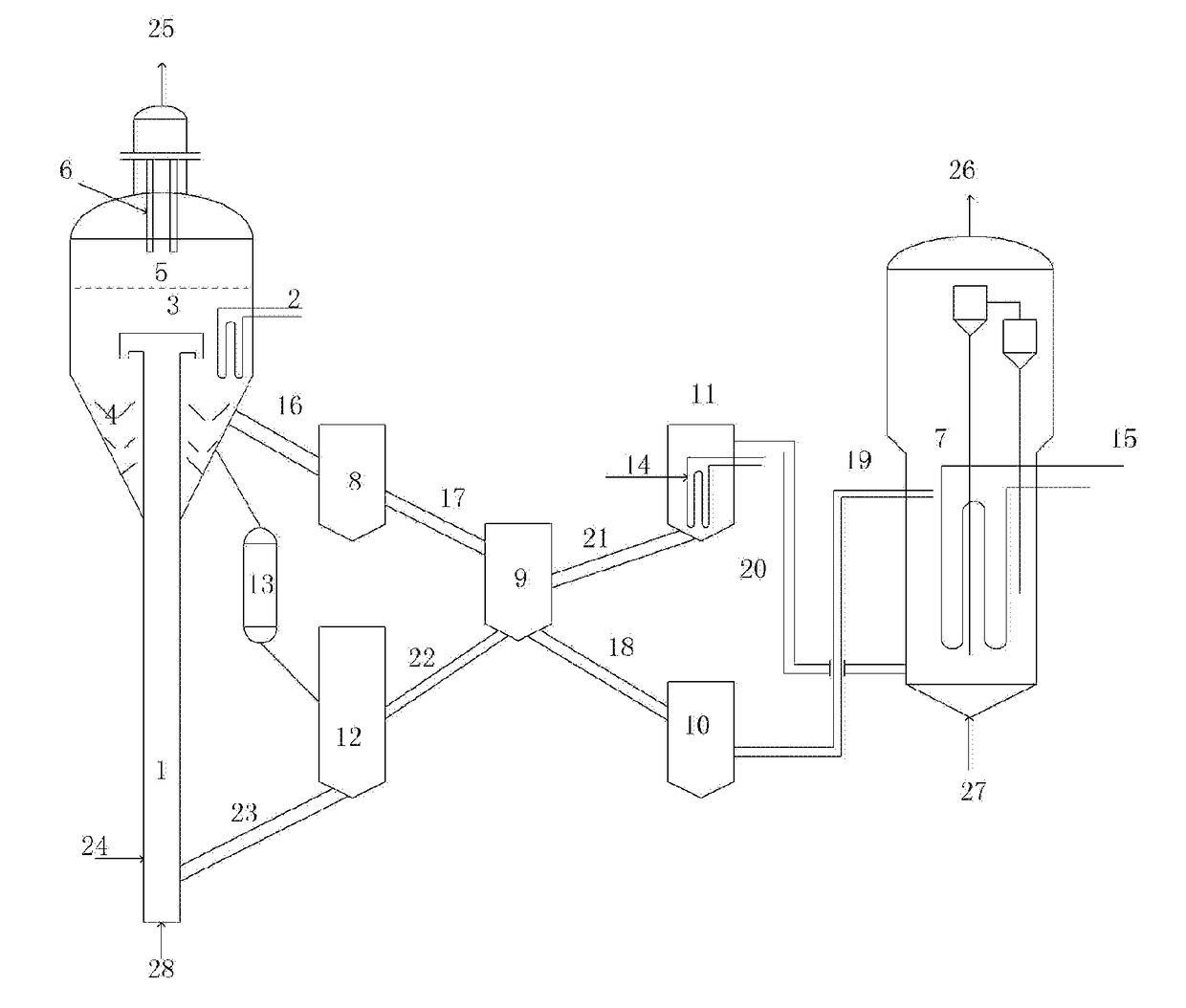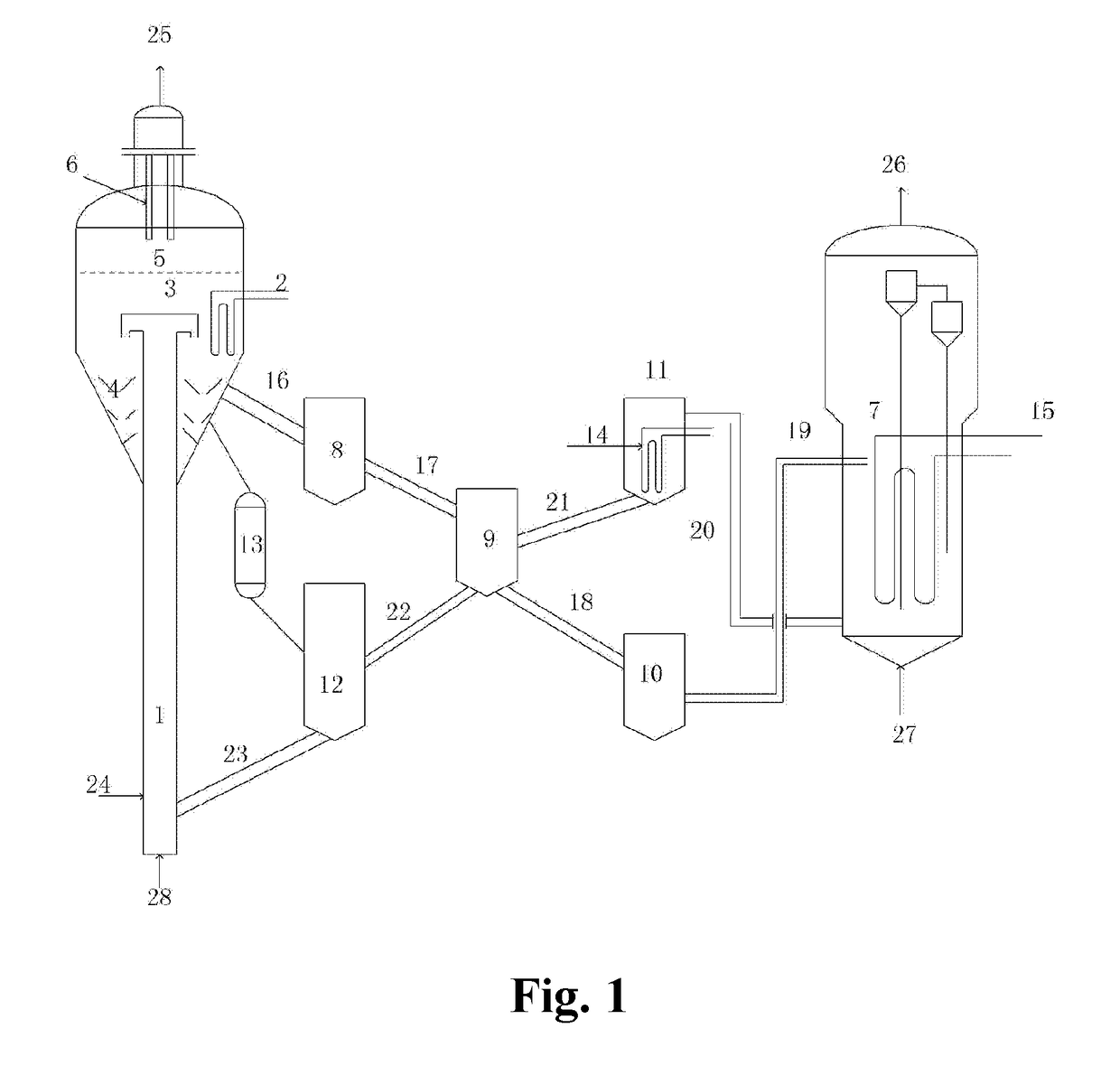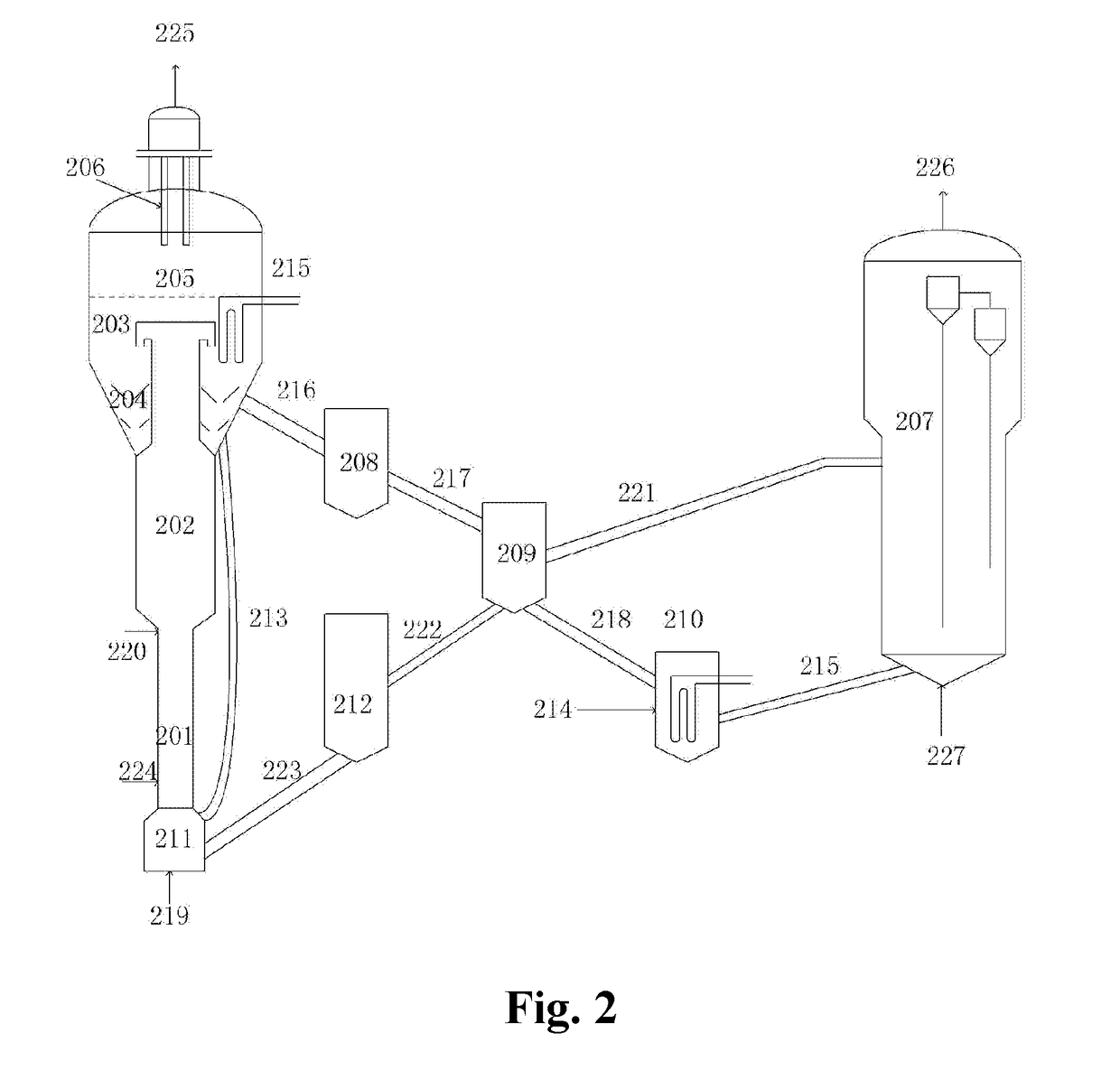Process for producing light olefins
- Summary
- Abstract
- Description
- Claims
- Application Information
AI Technical Summary
Benefits of technology
Problems solved by technology
Method used
Image
Examples
first specific embodiment
[0077]FIG. 1 is a flowchart of the process for producing light olefins from the oxygen-containing compound feedstock according to the first specific embodiment of the present invention.
[0078]As shown in FIG. 1, the oxygen-containing compound feedstock from the feeding line 24 is transported to the riser reactor 1 of the riser-type reactor, and is contacted with the catalyst from the pipeline 23 and lifted by means of the pre-lifting line 28 to conduct the dehydration reaction to produce olefins. After the reaction, the resulting hydrocarbon product enters the dense bed reactor 3. An excessive heat is removed from the dense bed reactor 3 with the internal heat remover 2. The hydrocarbon product is further reacted in the dense bed reactor 3. The resulting light olefins-rich hydrocarbon and the spent catalyst are transported to the sedimentation zone 5. After sedimentation, the spent catalyst returns to the dense bed reactor 3. The light olefins-rich hydrocarbon and the entrapped spent...
second specific embodiment
[0080]FIG. 2 is a flowchart of the process for producing light olefins from the oxygen-containing compound feedstock according to the second specific embodiment of the present invention.
[0081]As shown in FIG. 2, the catalyst from the pipeline 223 and the spent catalyst from the pipeline 213 are mixed in the catalyst mixer 211. The mixed catalyst is lifted with the pre-lifting gas from the pre-lifting line 219 and transported to the riser reactor 201 of the riser-type reactor. The oxygen-containing compound feedstock is transported to the riser reactor 201 via the feeding line 224, and contacted with the catalyst from the mixer 211 to conduct the dehydration reaction to produce olefins. After the reaction, the resulting hydrocarbon product is further reacted in the internal riser and distributor 202, and then transported to the dense bed reactor 203. The quenching medium from the quenching medium line 220 is transported to the riser reactor 201 to control the reaction temperature. Th...
third specific embodiment
[0083]FIG. 3 is a flowchart of the process for producing light olefins from the oxygen-containing compound feedstock according to the third specific embodiment of the present invention.
[0084]As shown in FIG. 3, the oxygen-containing compound feedstock is transported to the riser reactor 301 of the riser-type reactor via the feeding line 324, and contacted with the catalyst from the pipeline 323 to conduct the dehydration reaction to produce olefins. After the reaction, the resulting hydrocarbon product is further reacted in the diameter-expanded riser 302, and then further reacted in the dense bed reactor 303. The resulting light olefins-rich hydrocarbon and the spent catalyst are transported to the sedimentation zone 305. After sedimentation, the spent catalyst returns to the dense bed reactor. The light olefins-rich hydrocarbon and the entrapped spent catalyst fine powder are filtered with the filter 306. The light olefins-rich hydrocarbon is transported to a product separation-re...
PUM
| Property | Measurement | Unit |
|---|---|---|
| Temperature | aaaaa | aaaaa |
| Temperature | aaaaa | aaaaa |
| Fraction | aaaaa | aaaaa |
Abstract
Description
Claims
Application Information
 Login to View More
Login to View More - R&D Engineer
- R&D Manager
- IP Professional
- Industry Leading Data Capabilities
- Powerful AI technology
- Patent DNA Extraction
Browse by: Latest US Patents, China's latest patents, Technical Efficacy Thesaurus, Application Domain, Technology Topic, Popular Technical Reports.
© 2024 PatSnap. All rights reserved.Legal|Privacy policy|Modern Slavery Act Transparency Statement|Sitemap|About US| Contact US: help@patsnap.com










